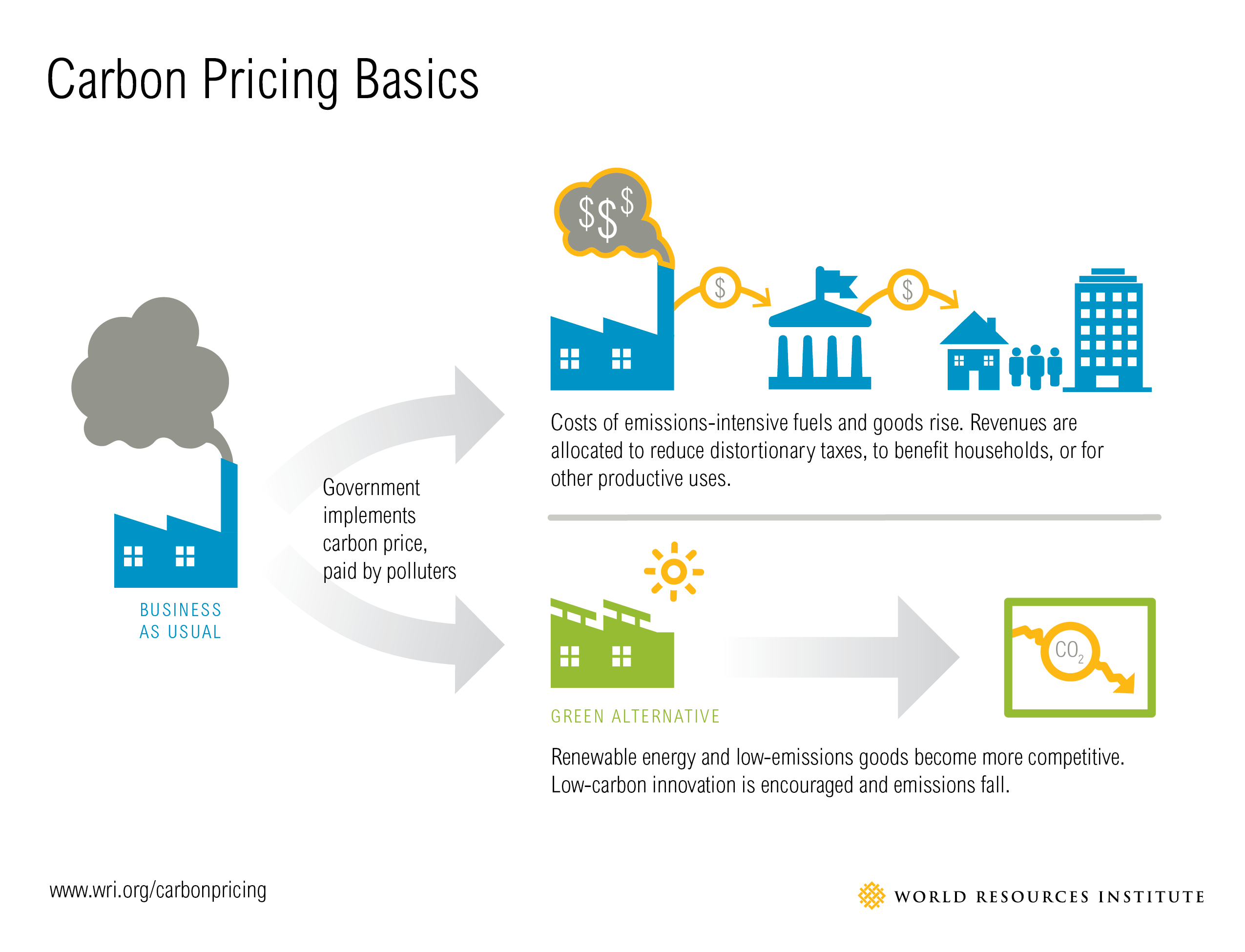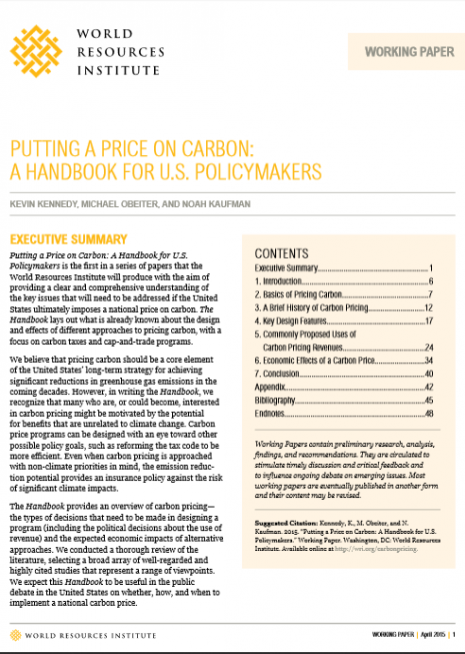
Putting a price on carbon: A Handbook for U.S. policymakers
Putting a price on carbon would tackle several issues faced by current policy-makers, such as a slow economic growth, a rising pollution or the impact of climate change. This multi-faceted solution should be seriously considered by the US authorities, following a new handbook by the World Resources Institute (WRI).
This working paper by WRI is the first in a series examining the concept of making emitters pay for the carbon pollution they produce. As the title suggests, the Handbook sets out the lay of the land around the different carbon-pricing models - such as cap-and-trade and carbon taxes - and can be used as a “how-to” guide for what to consider when designing a carbon-pricing policy.
It’s been nearly six years since comprehensive climate legislation passed either house of Congress. In the absence of Congressional action, the Obama administration has proposed a number of measures to reduce greenhouse gas emissions across the economy. While WRI analysis shows that these measures can help the United States meet its near- and medium-term climate goals, existing legal authorities are insufficient for meeting long-term emissions-reduction targets. A policy that puts a price on greenhouse gas emissions could be just the ticket.
Research shows that curbing climate change and growing the economy can and must go hand-in-hand. A well-designed carbon price can help the United States achieve its climate goals while improving economic efficiency and fostering growth.

Attachment:
Read more:
The article by the World Resources Institute
Photo by Martini DK / CC BY SA 2.0

